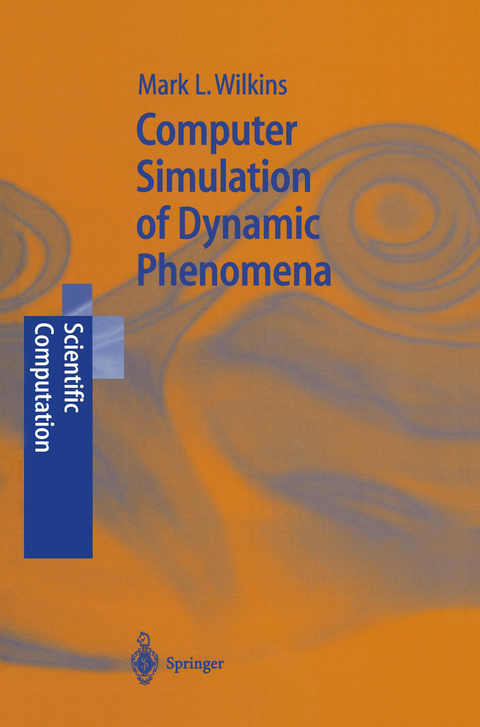
Computer Simulation of Dynamic Phenomena
Springer Berlin (Verlag)
978-3-540-63070-8 (ISBN)
1. Elements of Fluid Mechanics.- 2. Numerical Techniques.- 3. Modeling the Behavior of Materials.- 4. Two-Dimensional Elastic-Plastic Flow.- 5. Sliding Interfaces in Two Dimensions.- 6. Elastic-Plastic Flow in Three Space Dimensions.- 7. Sliding Surfaces in Three Dimensions.- 8. Magnetohydrodynamics of HEMP.- Appendices.- A. Effect of a Second Shock on the Principal Hugoniot.- B. Finite Difference Program for One Space Dimension and Time.- B.1 Fundamental Equations.- B.2 Finite Difference Equations.- B.3 Boundary Conditions.- B.4 Opening and Closing Voids.- C. A Method for Determining the Plastic Work Hardening Function.- C.1 Application to 6061-T6 Aluminum.- D. Detonation of a High Explosive for a ?-Law Equation of State.- E. Magnetic Flux Calculation.- F. Thermal Diffusion Calculation.- References.
From the reviews
"The focus on the numerical scheme by the author was particularly good. Text, equations and illustrations have been employed very well to explain the methods of producing the numerical code. The procedure to implement them practically is also well documented." (The Physicist, 2000)
"(....) the book offers a unique and interesting blend of numerical fluid and solid mechanics. As such, it should serve well as a reference for a graduate course on computational mechanics." (Applied Mechanics Reviews, 1999)
| Erscheint lt. Verlag | 1.4.1999 |
|---|---|
| Reihe/Serie | Scientific Computation |
| Zusatzinfo | XVI, 246 p. |
| Verlagsort | Berlin |
| Sprache | englisch |
| Maße | 155 x 235 mm |
| Gewicht | 512 g |
| Themenwelt | Naturwissenschaften ► Physik / Astronomie ► Allgemeines / Lexika |
| Naturwissenschaften ► Physik / Astronomie ► Theoretische Physik | |
| Schlagworte | behaviour of materials • Computer • computer simulation • Computersimulation • detonation wawes • Dynamik (Physik) • elastic-plastic flow • fluid mechanics • Magnetohydrodynamics • Maxwell's equations • Mechanics • Modeling • plastic waves • Simulation • sliding surfaces • sound sliding interfaces |
| ISBN-10 | 3-540-63070-8 / 3540630708 |
| ISBN-13 | 978-3-540-63070-8 / 9783540630708 |
| Zustand | Neuware |
| Haben Sie eine Frage zum Produkt? |
aus dem Bereich


